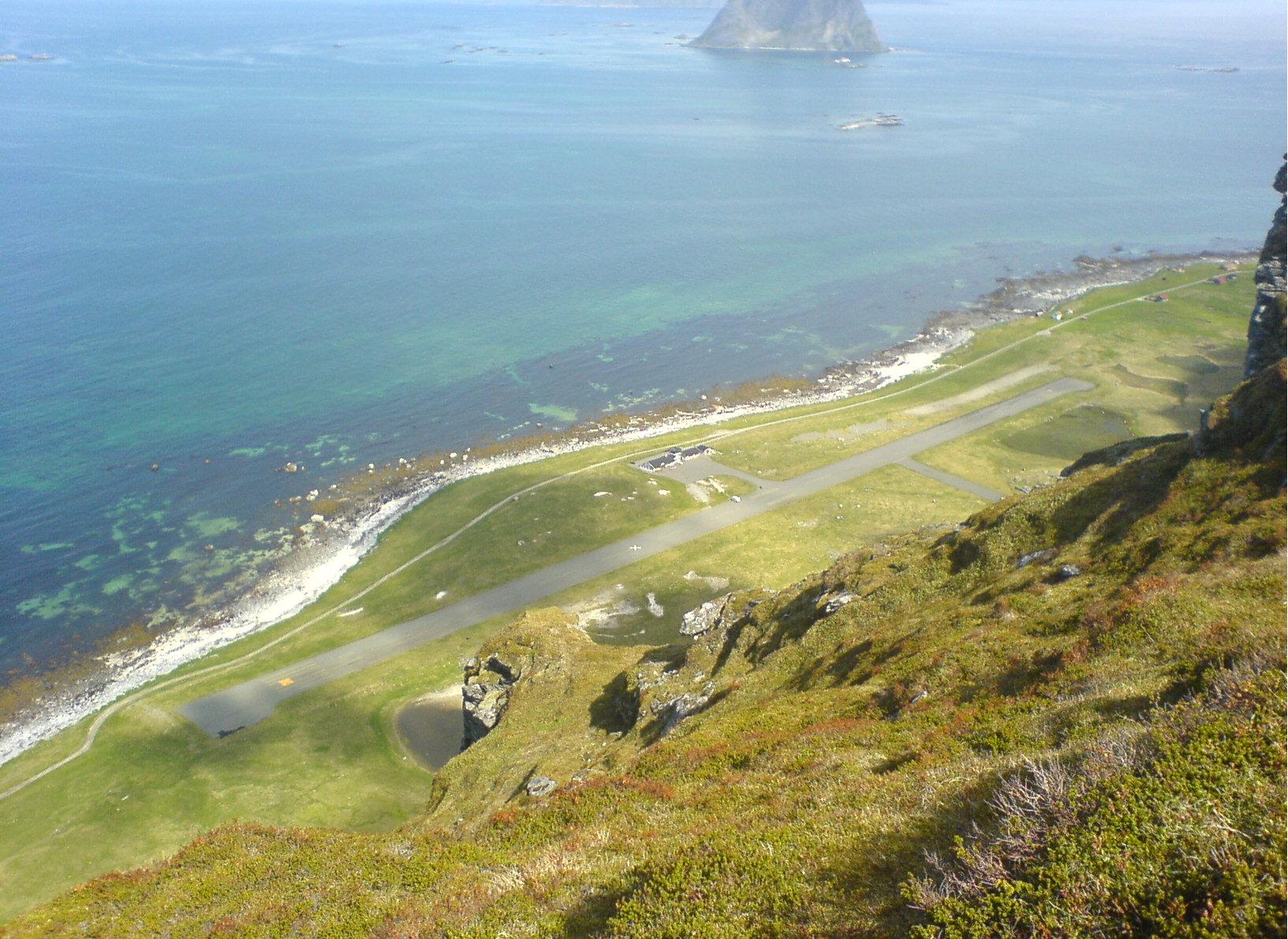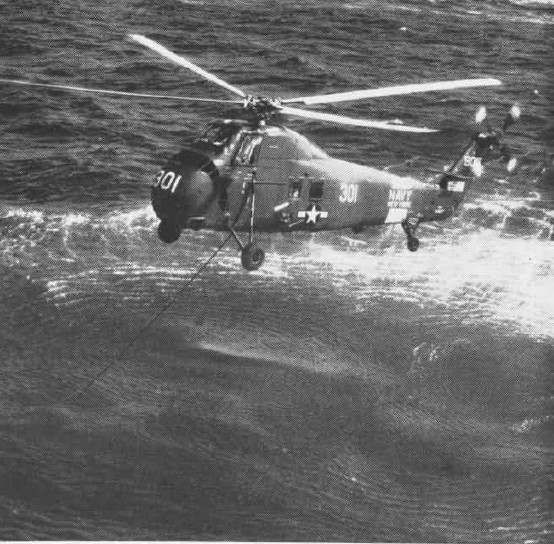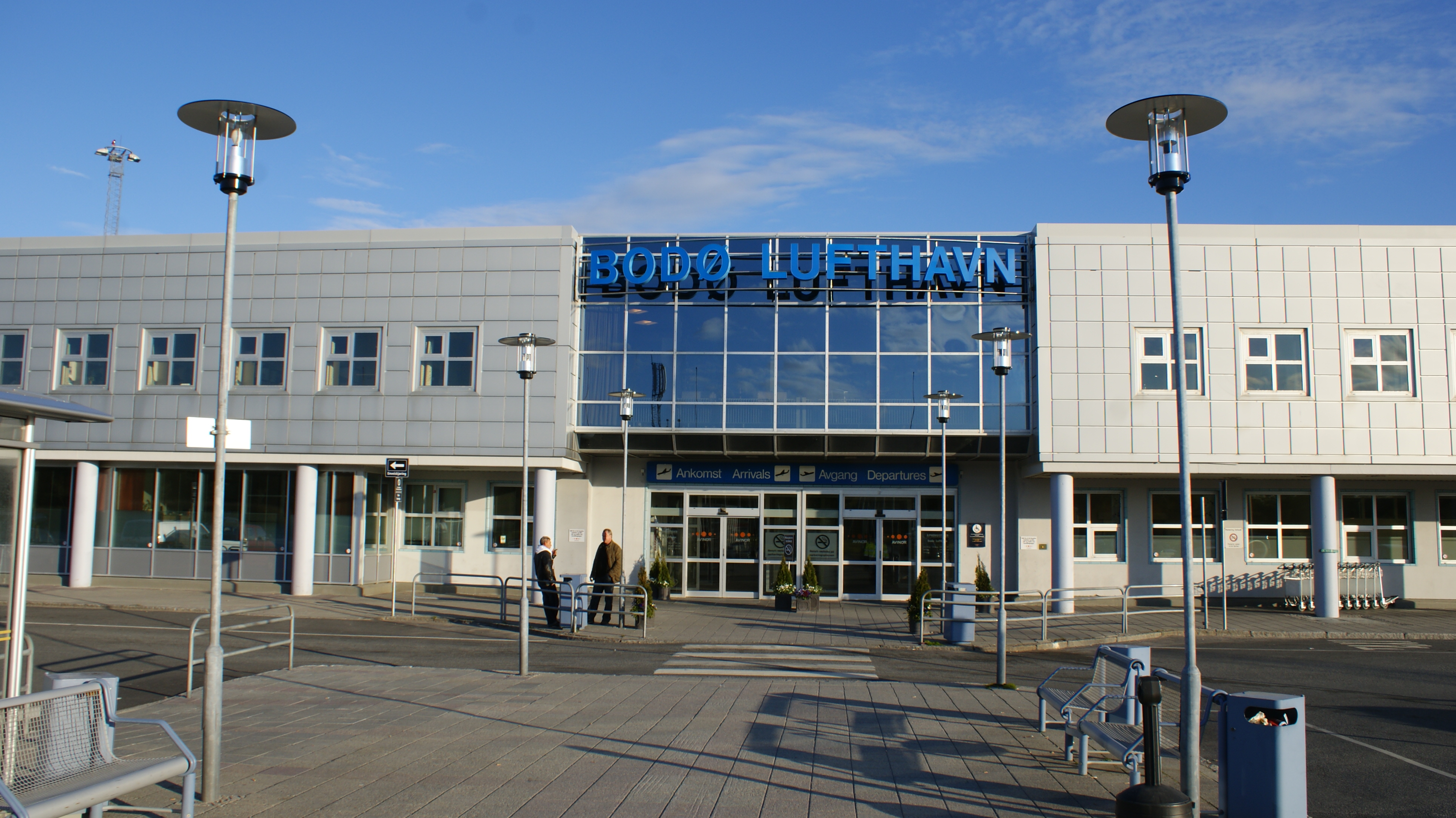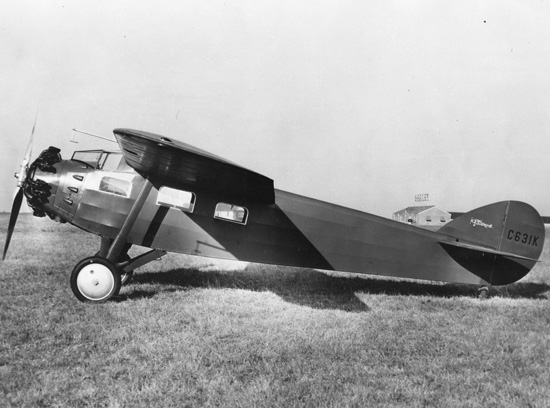|
Værøy Heliport
Værøy Heliport ( no, Værøy helikopterhavn; ) is a heliport located at Tobbisodden on the island of Værøya in Værøy Municipality in Nordland county, Norway. The heliport lies close to the village of Sørland, the municipal centre of the municipality. The airport, operated by the state-owned Avinor, consists of a single helipad and handled 9,420 passengers in 2014. Services are provided by Lufttransport using the AgustaWestland AW139 to the nearby mainland Bodø (town), town of Bodø, based on a public service obligation contract. Widerøe commenced seaplane operates to Værøy from 1965; five years later the first helicopter services were introduced. Planning of an airport started in the late 1960s, but Værøy Airport did not open until 1986. The fatal Widerøe Flight 839 accident took place on 12 April 1990, causing the airport to be closed. Helicopter services commenced in 1993 and Værøy Heliport opened in 1997, after several locations had been considered. Services we ... [...More Info...] [...Related Items...] OR: [Wikipedia] [Google] [Baidu] |
Avinor
Avinor AS is a state-owned limited company that operates most of the civil airports in Norway. The Norwegian state, via the Norwegian Ministry of Transport and Communications, controls 100 percent of the share capital. Avinor was created on 1 January 2003, by the privatization of the Norwegian Civil Aviation Administration known as ''Luftfartsverket''. Its head office is in Bjørvika, Oslo, located on the seaside of Oslo Central Station. Avinor owns and operates 44 airports in Norway, fourteen in association with the Royal Norwegian Air Force, and is responsible for air traffic control services in Norway. In addition to the 44 airports, it operates three Area Control Centers: Bodø Air Traffic Control Center, Stavanger Air Traffic Control Center and Oslo ATCC. , the chief executive officer was Sverre Quale who has been in the job since 18 April 2006. He was previously the head of the Norwegian Accident Investigation Board. As of 2011, Sverre Quale has been employed as the C ... [...More Info...] [...Related Items...] OR: [Wikipedia] [Google] [Baidu] |
Widerøe Flight 839
Widerøe Flight 839, also known as the Værøy Accident ( no, Værøy-ulykken), was a de Havilland Canada DHC-6-300 Twin Otter that crashed shortly after take-off from Værøy Airport in Norway. The incident occurred on 12 April 1990 at 14:44, killing all five people on board. The cause of the accident were strong winds that exceeded the structure's tolerance, causing the tail rudder and tailplane to crack so the plane became uncontrollable. Impact occurred 63 seconds after take-off and 8 seconds after the crack. The aircraft crashed into the water, and a search was conducted for several days to find the wreck. Uneven and strong winds had given the airport low regularity, and prior to take-off, wind speeds of had been recorded. The accident caused the airport to be permanently closed, and replaced by Værøy Heliport. The incident was investigated by the Accident Investigation Board Norway, which published its conclusions in 1991. Three years later, a new investigation was con ... [...More Info...] [...Related Items...] OR: [Wikipedia] [Google] [Baidu] |
Sikorsky H-34
The Sikorsky H-34 "Choctaw" (company designation S-58) is an American Reciprocating engine, piston-engined military helicopter originally designed by Sikorsky Aircraft, Sikorsky as an anti-submarine warfare (ASW) aircraft for the United States Navy. It has seen extended use when adapted to Turboshaft, turbine power by the British licensee as the Westland Wessex and Sikorsky as the later S-58T. H-34s served, mostly as medium transports, on every continent with the armed forces of 25 countries. It saw combat in Algeria, the Dominican Republic, Nicaragua, and throughout Southeast Asia. Other uses included saving flood victims, recovering astronauts, fighting fires, and carrying presidents. It was the last piston-engined helicopter to be operated by the United States Marine Corps, having been replaced by turbine-powered types such as the Bell UH-1 Iroquois, UH-1 Huey and Boeing Vertol CH-46 Sea Knight, CH-46 Sea Knight. A total of 2,108 H-34s were manufactured between 1953 and 1970 ... [...More Info...] [...Related Items...] OR: [Wikipedia] [Google] [Baidu] |
Vesterålen
Vesterålen is a district and archipelago in Nordland county, Norway. It is located just north of Lofoten and west of Harstad. It is the northernmost part of Nordland county. Sortland is the largest town, situated near the center of the archipelago. Vesterålen includes the municipalities of Andøy, Bø, Hadsel, Sortland, and Øksnes. Name The Old Norse forms of the name were ' and ' (plural). The first element is ' which means "west" and the last element is ' which means "(deep and narrow) sound" or "strait". The name describes the seaway west of the island of Hinnøya. The old name of the seaway east of Hinnøya (now called Tjeldsundet) might have been ' (meaning "the eastern sound/strait"). Geography Vesterålen consists of the municipalities of Andøy, Bø, Hadsel, Sortland, and Øksnes. According to some definitions, Lødingen is also included. Vesterålen is made up of several islands: Langøya, Andøya, Hadseløya, the western part of Hinnøya, the northern part of ... [...More Info...] [...Related Items...] OR: [Wikipedia] [Google] [Baidu] |
Lofoten
Lofoten () is an archipelago and a traditional district in the county of Nordland, Norway. Lofoten has distinctive scenery with dramatic mountains and peaks, open sea and sheltered bays, beaches and untouched lands. There are two towns, Svolvær and Leknes – the latter is approximately north of the Arctic Circle and approximately away from the North Pole. The archipelago experiences one of the world's largest elevated temperature anomalies relative to its high latitude. Etymology ''Lofoten'' ( non, Lófótr) was the original name of the island Vestvågøya. The first element is ''ló'' (i.e., "lynx") and the last element is derived from Norse ''fótr'' (i.e., "foot"), as the shape of the island must have been compared with that of a lynx's foot. (The old name of the neighbouring island Flakstadøya was ''Vargfót'', "wolf's foot", from ''vargr'' "wolf".) Alternatively it could derive from the word for light in reference to the presence of Aurora Borealis as the w ... [...More Info...] [...Related Items...] OR: [Wikipedia] [Google] [Baidu] |
Search And Rescue
Search and rescue (SAR) is the search for and provision of aid to people who are in distress or imminent danger. The general field of search and rescue includes many specialty sub-fields, typically determined by the type of terrain the search is conducted over. These include mountain rescue; ground search and rescue, including the use of search and rescue dogs; urban search and rescue in cities; combat search and rescue on the battlefield and air-sea rescue over water. International Search and Rescue Advisory Group (INSARAG) is a UN organization that promotes the exchange of information between national urban search and rescue organizations. The duty to render assistance is covered by Article 98 of the UNCLOS. Definitions There are many different definitions of search and rescue, depending on the agency involved and country in question. *Canadian Forces: "Search and Rescue comprises the search for, and provision of aid to, persons, ships or other craft which are, or are fear ... [...More Info...] [...Related Items...] OR: [Wikipedia] [Google] [Baidu] |
Røst
Røst is a small island municipality in Nordland county, Norway. It is part of the traditional district of Lofoten. The administrative centre of the municipality is the village of Røstlandet on the island of Røstlandet. The island municipality is very small and is essentially a large fishing village centered around Røstlandet. Many of the residents are involved in the fishing industry or support the industry. There are six fish farms in Røst. During the main fishing season, there can be up to 600 fishing boats based out of Røst. The municipality is the 353rd largest by area out of the 356 municipalities in Norway. Røst is the 351st most populous municipality in Norway with a population of 469. The municipality's population density is , and its population has decreased by 21.2% over the previous 10-year period. General information The municipality of Røst was established on 1 July 1928 when it was separated from Værøy Municipality. Initially, it had 731 residents. ... [...More Info...] [...Related Items...] OR: [Wikipedia] [Google] [Baidu] |
Bodø Airport
Bodø Airport ( no, Bodø lufthavn; ) is a civil airport in the town of Bodø in Bodø Municipality in Nordland county, Norway. Located just south of the city centre, on the westernmost tip of the Bodø peninsula, it shares facilities with the military air force base Bodø Main Air Station. The airport has a single concrete, runway which runs in a roughly east–west direction. In addition to jet operations to major domestic destinations, the airport serves as a hub for regional airline flights to Helgeland, Lofoten and Vesterålen. A new airport could be ready in the last half of 2029, according to media's paraphrasing (in January 2022) of Avinor. Planning is in progress to build a new airport about one kilometer (0.6 miles) south and build a new smart city district on the site of the current airport. The smart city will be largely focused on transportation and sustainability. History Postal flights to Bodø started in 1921, and before 1940 Bodø was served with sea planes f ... [...More Info...] [...Related Items...] OR: [Wikipedia] [Google] [Baidu] |
Cessna
Cessna () is an American brand of general aviation aircraft owned by Textron Aviation since 2014, headquartered in Wichita, Kansas. Originally, it was a brand of the Cessna Aircraft Company, an American general aviation aircraft manufacturing corporation also headquartered in Wichita. The company produced small, piston-powered aircraft, as well as business jets. For much of the mid-to-late 20th century, Cessna was one of the highest-volume and most diverse producers of general aviation aircraft in the world. It was founded in 1927 by Clyde Cessna and Victor Roos and was purchased by General Dynamics in 1985, then by Textron, Inc. in 1992. In March 2014, when Textron purchased the Beechcraft and Hawker Aircraft corporations, Cessna ceased operations as a subsidiary company and joined the others as one of the three distinct brands produced by Textron Aviation. Throughout its history, and especially in the years following World War II, Cessna became best-known for producing hig ... [...More Info...] [...Related Items...] OR: [Wikipedia] [Google] [Baidu] |
De Havilland Canada DHC-3 Otter
The de Havilland Canada DHC-3 Otter is a single-engined, high-wing, propeller-driven, short take-off and landing ( STOL) aircraft developed by de Havilland Canada. It was conceived to be capable of performing the same roles as the earlier and highly successful Beaver, including as a bush plane, but is overall a larger aircraft. Design and development The rugged single-engined, high-wing, propeller-driven DHC-3 Otter was conceived in January 1951 by de Havilland Canada as a larger, more powerful version of its highly successful DHC2 Beaver STOL utility transport. Dubbed the "King Beaver" during design, it would be the veritable "one-ton truck" to the Beaver's "half-ton" role. The Otter received Canadian certification in November 1952 and entered production shortly thereafter. Using the same overall configuration as the Beaver, the new, much heavier design incorporated a longer fuselage, greater-span wing, and cruciform tail. Seating in the main cabin expanded from six to 1 ... [...More Info...] [...Related Items...] OR: [Wikipedia] [Google] [Baidu] |
Sea Plane
A seaplane is a powered fixed-wing aircraft capable of taking off and landing (alighting) on water.Gunston, "The Cambridge Aerospace Dictionary", 2009. Seaplanes are usually divided into two categories based on their technological characteristics: floatplanes and flying boats; the latter are generally far larger and can carry far more. Seaplanes that can also take off and land on airfields are in a subclass called amphibious aircraft, or amphibians. Seaplanes were sometimes called ''hydroplanes'', but currently this term applies instead to motor-powered watercraft that use the technique of hydrodynamic lift to skim the surface of water when running at speed. The use of seaplanes gradually tapered off after World War II, partially because of the investments in airports during the war but mainly because landplanes were less constrained by weather conditions that could result in sea states being too high to operate seaplanes while landplanes could continue to operate. In th ... [...More Info...] [...Related Items...] OR: [Wikipedia] [Google] [Baidu] |








